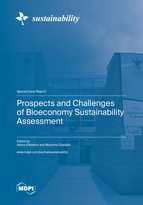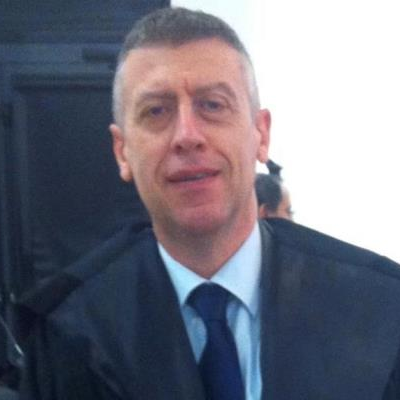Prospects and Challenges of Bioeconomy Sustainability Assessment
A special issue of Sustainability (ISSN 2071-1050). This special issue belongs to the section "Bioeconomy of Sustainability".
Deadline for manuscript submissions: closed (31 January 2023) | Viewed by 101059
Special Issue Editors
Interests: bioeconomy; biomethane; circular economy; e-waste; economic analysis; photovoltaic; renewable energy; sustainability; waste management
Special Issues, Collections and Topics in MDPI journals
Interests: green economy; real options; strategic managemen; managerial economics; economics analysis; energy economics; econometrics; supply chain; sustainable development goals
Special Issues, Collections and Topics in MDPI journals
Special Issue Information
Dear Colleagues,
In response to the compelling calls to action from Cop26 at a global scale and, in particular, to be in line with a sustainable agenda, the role of the bioeconomy is crucial.
The bioeconomy involves several sectors: agriculture, forestry, fishing, and aquaculture, the manufacture of food, beverages, tobacco, bio-based textiles, wood products, furniture, paper, bio-based chemicals, pharmaceuticals, plastics, rubber, and liquid biofuels, and the production of bioelectricity.
The literature shows that the assessment of the sustainability of the bioeconomy is based on circular processes of material flows, the appropriate use of raw materials in accordance with the actual needs of consumers, the availability of these resources, and the effectiveness and efficiency that characterizes all processes and products.
The work submitted to this special issue should, therefore, pursue not just the analysis of consumers and producers, but also of the degree to which stakeholders constitute a community. Evidently, a multidisciplinary approach is required, with the aim of providing numerical assessments that allow us to find solutions to real problems, to foster concepts such as energy communities and sustainable certifications, and to help us develop new markets based on circular/green foundations. Such analyses can support policy makers in charting the direction for achieving a cleaner world.
We must, therefore, overcome our 'selfish' vision by thinking of the whole society, and of future generations.
References
D’Adamo I, Gastaldi M, Morone P, Rosa P, Sassanelli C, Settembre-Blundo S, Shen Y (2022) Bioeconomy of Sustainability: Drivers, Opportunities and Policy Implications. Sustainability 14(1): 200. DOI: 10.3390/su14010200.
Prof. Dr. Idiano D’Adamo
Prof. Dr. Massimo Gastaldi
Guest Editors
Manuscript Submission Information
Manuscripts should be submitted online at www.mdpi.com by registering and logging in to this website. Once you are registered, click here to go to the submission form. Manuscripts can be submitted until the deadline. All submissions that pass pre-check are peer-reviewed. Accepted papers will be published continuously in the journal (as soon as accepted) and will be listed together on the special issue website. Research articles, review articles as well as short communications are invited. For planned papers, a title and short abstract (about 100 words) can be sent to the Editorial Office for announcement on this website.
Submitted manuscripts should not have been published previously, nor be under consideration for publication elsewhere (except conference proceedings papers). All manuscripts are thoroughly refereed through a single-blind peer-review process. A guide for authors and other relevant information for submission of manuscripts is available on the Instructions for Authors page. Sustainability is an international peer-reviewed open access semimonthly journal published by MDPI.
Please visit the Instructions for Authors page before submitting a manuscript. The Article Processing Charge (APC) for publication in this open access journal is 2400 CHF (Swiss Francs). Submitted papers should be well formatted and use good English. Authors may use MDPI's English editing service prior to publication or during author revisions.
Keywords
- circular bioeconomy
- circular/green premium
- energy communities
- policy implications
- sustainable certification
- sustainable consumption
- sustainable bio-based production







